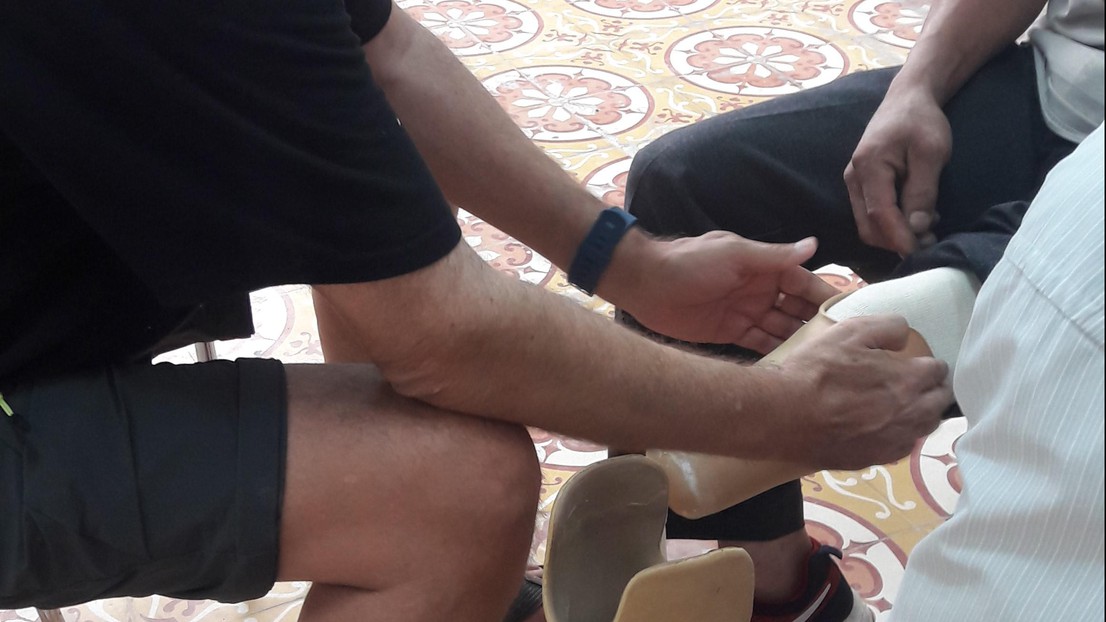AGILIS prosthetic foot field trial

© 2018 EPFL EssentialTech Centre
Part of the Engineering for Humanitarian Action Programme, the Agilis project has come to a major milestone - the start of deployment of its innovative foot prosthesis.
Game-changing prosthetic foot brings mobility within reach
The École Polytechnique Fédérale de Lausanne (EPFL) and the International Committee of the Red Cross (ICRC) have collaborated to develop an innovative prosthetic foot that combines affordability with advanced performance. Designed with a focus on accessibility for people in low-income countries, this dynamic prosthetic foot is priced at one-tenth the cost of similar products currently on the market.
Energy efficiency meets responsiveness
The prosthetic foot utilises advanced energy storage and return mechanics to enhance mobility. During a step, it stores energy, which is then released upon push-off, allowing for a more responsive and energy-efficient walking experience. This technology enables users to experience smoother and more natural movement, reducing the physical strain of walking.
The device is constructed from a highly elastic composite keel encased in a durable foam shell. It has successfully passed rigorous mechanical testing in the lab, enduring 2 million loading cycles to ensure its durability and reliability.
Real-world performance testing
To assess its real-world efficacy, the new prosthetic foot was tested alongside the SACH prosthetic foot commonly used by the ICRC. The study involved 120 participants across two distinct environments: the wet, rural landscapes of Cambodia and the dry, urban settings of Iraq.
Participants wore inertial sensors that measured acceleration and angular velocity, providing detailed biomechanical insights. The data revealed significant improvements in participants’ gait, including enhanced symmetry while walking. Users also praised the new prosthesis for its comfort and performance.
Continuous improvement and future rollout
While the initial tests were promising, the foam shell required further enhancement to withstand diverse environmental conditions. Researchers refined its chemical composition, resulting in a more robust design that is now ready for industrial manufacturing.
The improved prosthetic foot is set to launch in 2025, with hopes of transforming lives worldwide. "We are ready to launch the product on the market," said a spokesperson for the project. "I really hope this product will be a game changer for a lot of people in the world."
With its groundbreaking combination of affordability, durability, and performance, this prosthetic foot marks a significant step forward in making mobility accessible to all.
A huge thanks goes out to all those involved in the project and our supporters: Grégory Huot, Dikolela Kalubi, Veronique Michaud, Kamiar Aminian, Joël Cugnoni, Mathieu Janier, Mathieu Falbriard, Rajasundar Chandran, Salil Apte, Gregoire Castella, John Botsis, Jean-Philippe Thiran, Gilles Carbonnier.
Conseil des EPF, Stavros Niarchos Foundation, Rolex SA